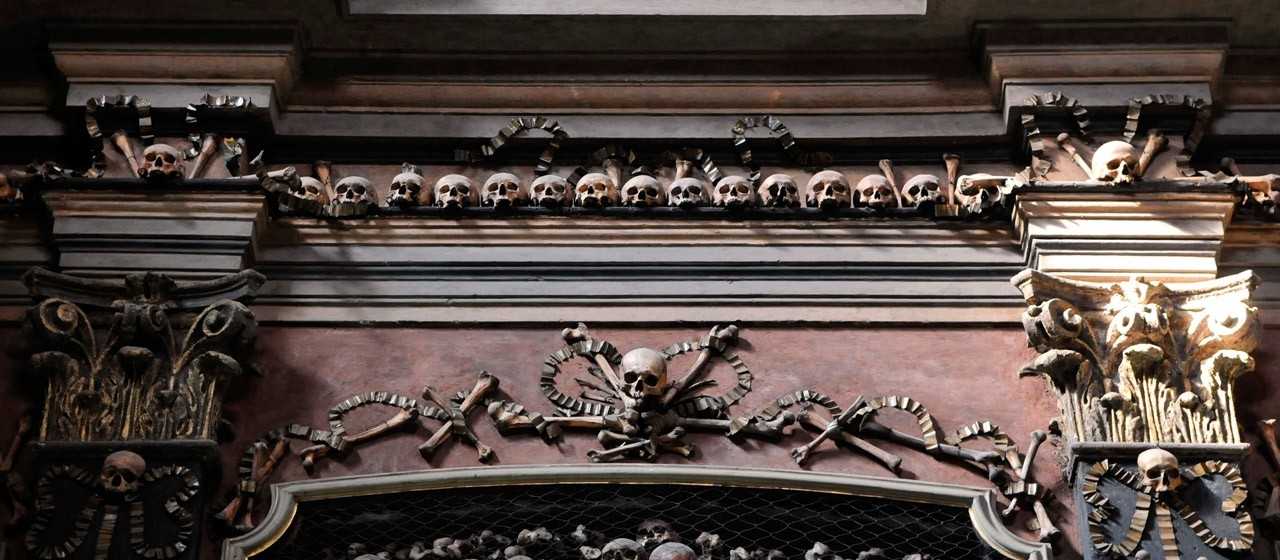San Bernardino alle Ossa: The Charnel House Chapel
Nestled in the heart of Milan, Italy, San Bernardino alle Ossa is a unique and intriguing site that draws visitors with its unusual and somewhat eerie charm. This small church, located near the larger and more famous Duomo di Milano, is renowned for its ossuary chapel, where the walls are adorned with human bones. For those interested in history, art, or the macabre, San Bernardino alle Ossa offers a fascinating glimpse into a lesser-known aspect of Milan’s rich cultural tapestry.
History and Origins
San Bernardino alle Ossa was originally built in the 13th century, primarily to accommodate the overflow of bodies from the nearby hospital cemetery. As the cemetery filled up, the bones were exhumed and placed in a small room adjacent to the church. Over time, this room evolved into the ossuary chapel that visitors see today. The church itself was rebuilt in the 17th century after a fire, but the ossuary remained intact, preserving its historical significance.
The chapel is named after Saint Bernardino of Siena, a popular preacher in the 15th century, although the connection to him is more honorary than historical. The ossuary’s use of human bones as decoration is not unique to Milan, but it is one of the more striking examples of this practice, which was more common in Europe during times when space for burials was limited.
Artistic and Architectural Features
The ossuary chapel of San Bernardino alle Ossa is a small, square room with walls covered in human skulls and bones, arranged in intricate patterns. The bones are set into the walls and even form decorative motifs around the doors and windows. This macabre decoration is both unsettling and fascinating, offering a stark reminder of mortality while also showcasing a unique form of artistic expression.
The ceiling of the chapel is adorned with a fresco by Sebastiano Ricci, an Italian Baroque painter. The fresco depicts a scene of angels and cherubs, providing a stark contrast to the somber decorations below. This juxtaposition of life and death, heaven and earth, is a central theme of the chapel, inviting visitors to reflect on the transient nature of human existence.
Visiting San Bernardino alle Ossa
San Bernardino alle Ossa is located just a short walk from the Duomo, making it an easy addition to any itinerary in Milan. The church is open to the public, and there is no entrance fee, although donations are appreciated to help with the maintenance of the site. Visitors should be respectful of the sacred nature of the chapel, keeping noise to a minimum and refraining from touching the bones.
Photography is generally allowed, but it’s always best to check for any specific restrictions upon arrival. The chapel is small, so it can become crowded, especially during peak tourist seasons. Visiting early in the morning or later in the afternoon can provide a more peaceful experience.
For those interested in learning more about the history and significance of the site, guided tours are available. These tours can provide valuable insights into the cultural and historical context of the ossuary, enhancing the overall experience.
Reflection and Significance
San Bernardino alle Ossa is more than just a curiosity; it is a place of reflection and contemplation. The chapel invites visitors to consider the impermanence of life and the ways in which different cultures have grappled with the concept of death. The use of human bones as decoration may seem morbid to some, but it also serves as a powerful reminder of the shared human experience.
In a city known for its fashion and modernity, San Bernardino alle Ossa offers a glimpse into a different side of Milan, one that is steeped in history and tradition. It is a testament to the city’s ability to preserve its past while continuing to evolve and grow.
For those seeking a deeper understanding of Milan’s cultural heritage, a visit to San Bernardino alle Ossa is a must. It is a place that challenges perceptions and encourages introspection, leaving a lasting impression on all who enter its doors.
